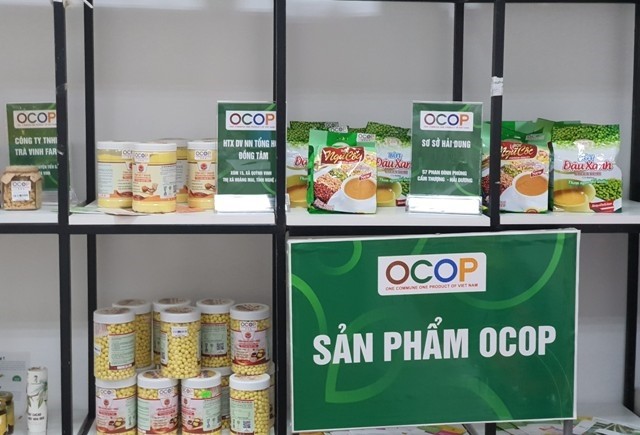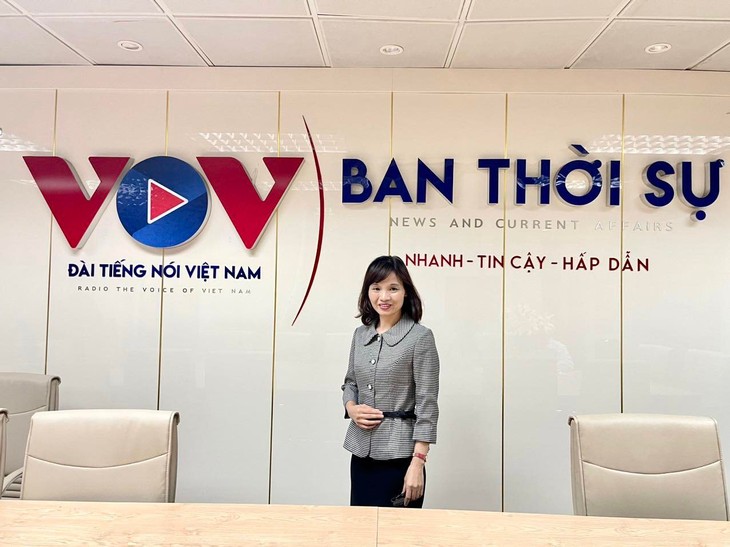(VOVWORLD) - The One Commune, One Product program (OCOP) is being implemented nationwide, and many agricultural products have been certified as 3- to 5-star OCOP items, encouraging farmers to invest more in production while meeting the domestic market and export requirements. The key now is to develop brands for OCOP products and expand consumer markets. In this week’s Q&A, we’ll bring you excerpts of a talk about the topic with Dr. Nguyen Thi Yen, Director of the Center for Rural Development SMART of the Thai Nguyen University of Agriculture and Forestry.
 OCOP items have affirmed the prestige, brands, and quality. (Photo: HNV) OCOP items have affirmed the prestige, brands, and quality. (Photo: HNV) |
VOV: Welcome, Ms. Yen, to VOV24/7’s Q&A. How have farmers, cooperatives, and businesses responded to the OCOP program?
Ms. Yen: OCOP products are receiving a lot of attention, especially from cooperatives, farmers, production facilities, and agricultural enterprises. 5,320 OCOP products have been certified with 3 stars or more. 20 have been granted 5-star certification. Farmers are very enthusiastic to participate in the program because this is a showcase for their own products.
VOV: So what are the advantages and difficulties faced by farmers participating in the program?
Ms. Yen: The biggest advantage when producing OCOP-certified items is enjoying many incentives from the State support policies, especially from administrations at the provincial, district, and commune level. Another advantage is that OCOP items are based on local products characterized by local natural, economic, and social conditions, and most importantly, cultural factors.
But those who produce OCOP items will find it difficult to satisfy market demands, which have become increasingly particular. So the question is, “How do you meet those needs?” Once farmers can meet the curent demands, they can earn money to re-invest in products of higher quality and newer design. So the biggest difficulty is the continuously changing demands of consumers.
A second challenge is preserving and storing agricultural products. If we don’t have sufficient infrastructure and the right technology, it will affect the quality of the OCOP products and the reputation of the producers. Another difficulty for OCOP producers is branding. It’s obvious that to expand the OCOP market, you must increase the identification of these products.
VOV: Localities seem to be rushing to develop brands for their OCOP products. What do you think of the situation?
Ms. Yen: I see that some cooperatives have developed OCOP products with 4 or 5 stars. But if they stop at that level, it’ll be very difficult for them to survive in constantly changing market. That’s why farmers should keep looking for ways to improve their products, so their brands are strengthened domestically and internationally.
 Dr. Nguyen Thi Yen at VOV (Photo: Thu Duyen) Dr. Nguyen Thi Yen at VOV (Photo: Thu Duyen) |
VOV: In your opinion, why do farmers need to build OCOP brands?
Ms. Yen: In my opinion, that is the responsibility of OCOP makers to the community. When farmers plan to make a product, they should think of the community. What I mean is if the community needs a product to ensure good health, for example, farmers must accept their responsibility for improving their product’s quality so it will benefit the community's health. That will result in a responsible product.
VOV: For OCOP items to develop sustainably, they must build their brand. To build an OCOP brand, what should farmers pay attention to?
Ms. Yen: To build a brand for an OCOP product, it’s necessary to pay attention to 3 things:
First, the power of the community. A product that involves many people in its production means its benefits will spread to the whole community and increase that community’s income.
Second, the product’s marketability. When a product is put into the market, buyers, naturally, want to know its origin. And when the product first hits the market, its design and color must catch the eye of consumers.
Third, the product’s quality. This is a decisive factor for any brand. No matter how beautiful the product is or how strong the community that produces the product is, if the quality is not guaranteed, it will be difficult to sustain the product in the market.
VOV: Thank you Dr. Nguyen Thi Yen, Director of the Center for Rural Development SMART, for granting VOV this talk.